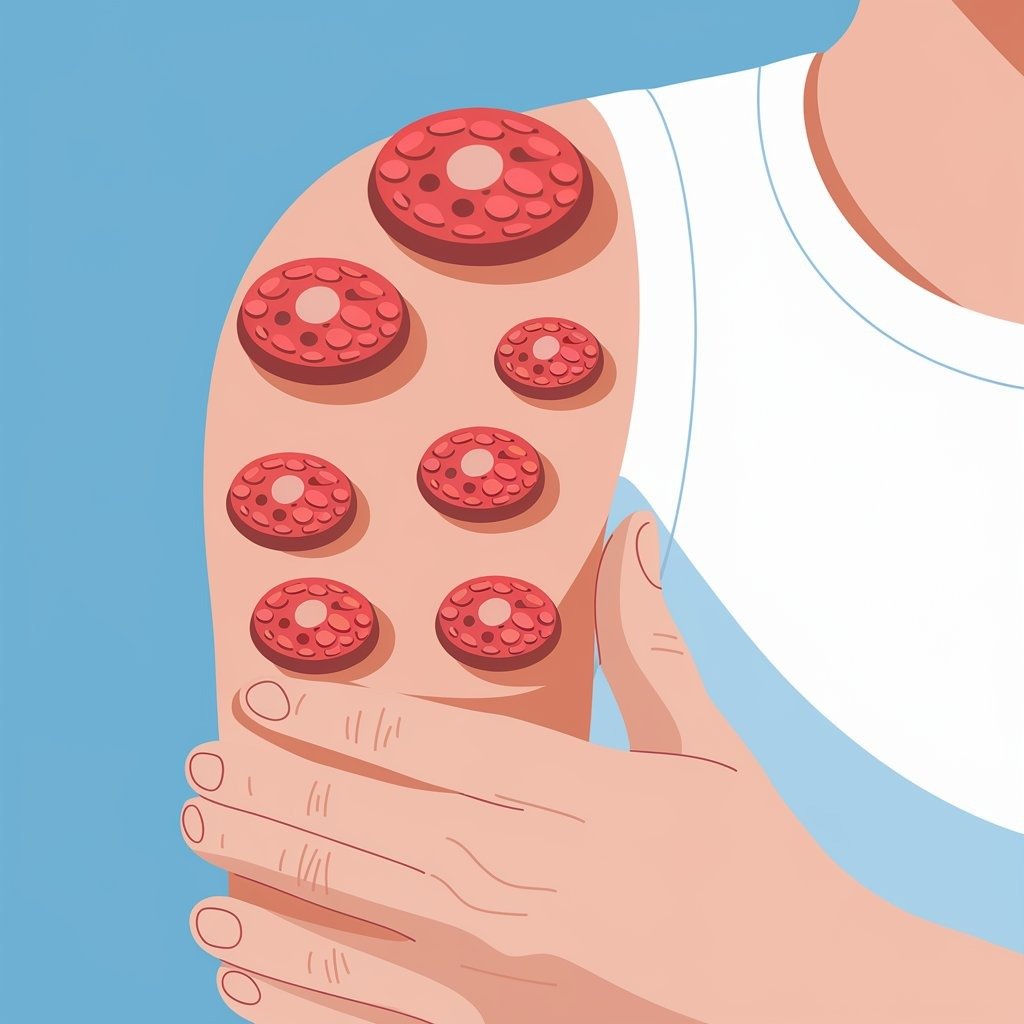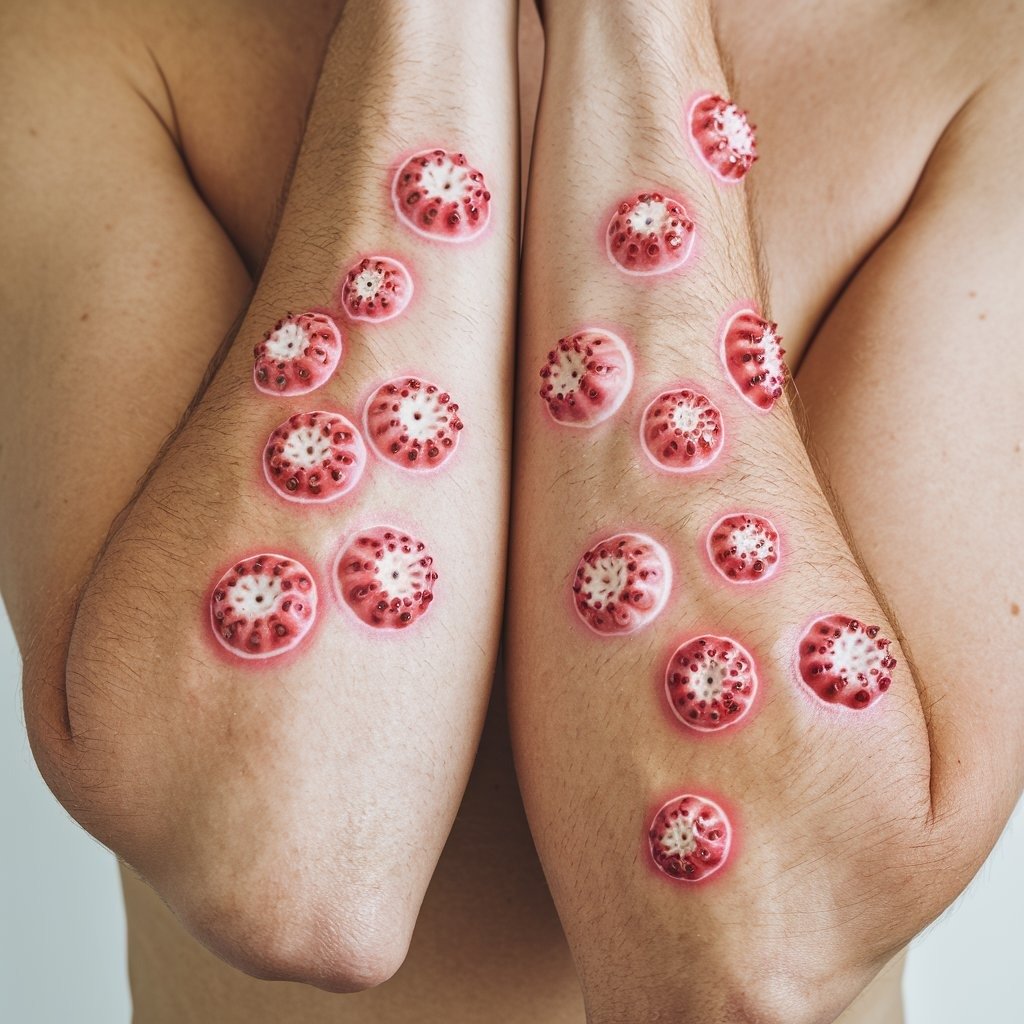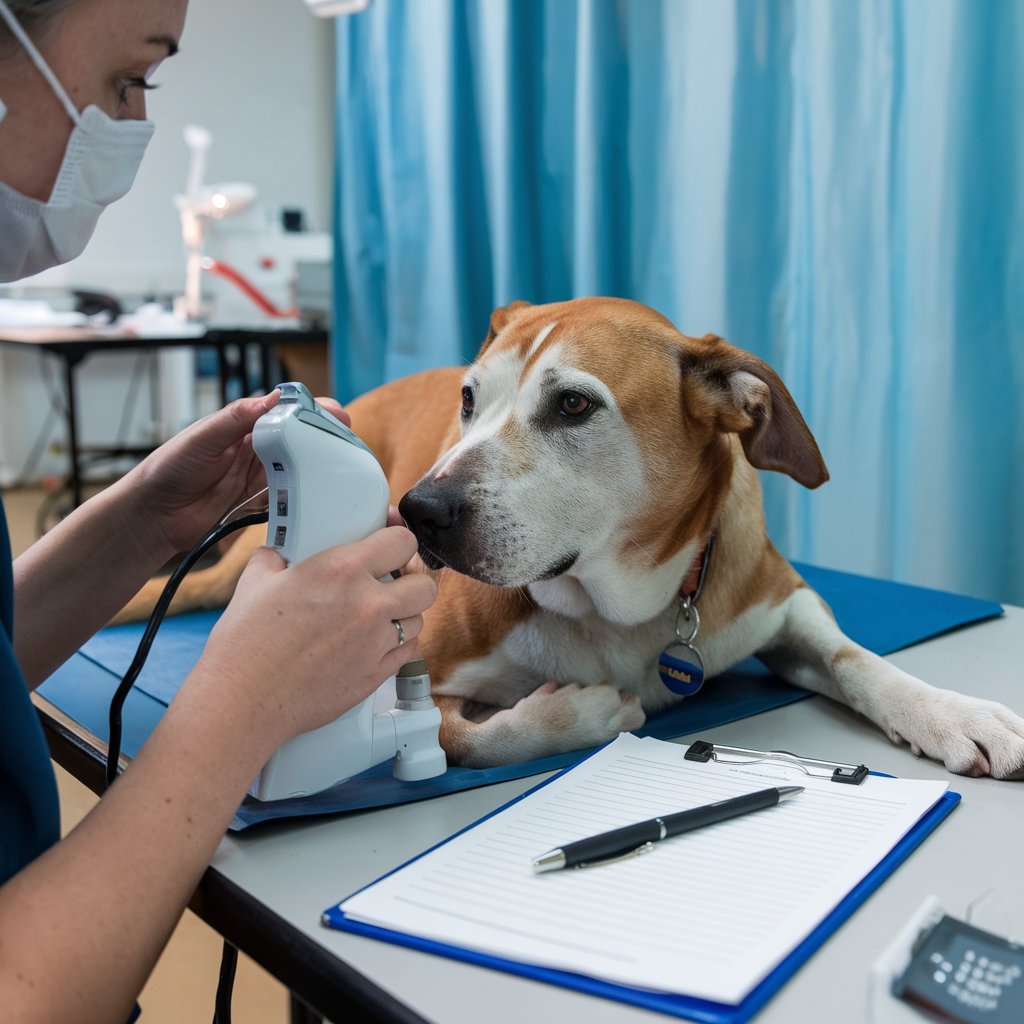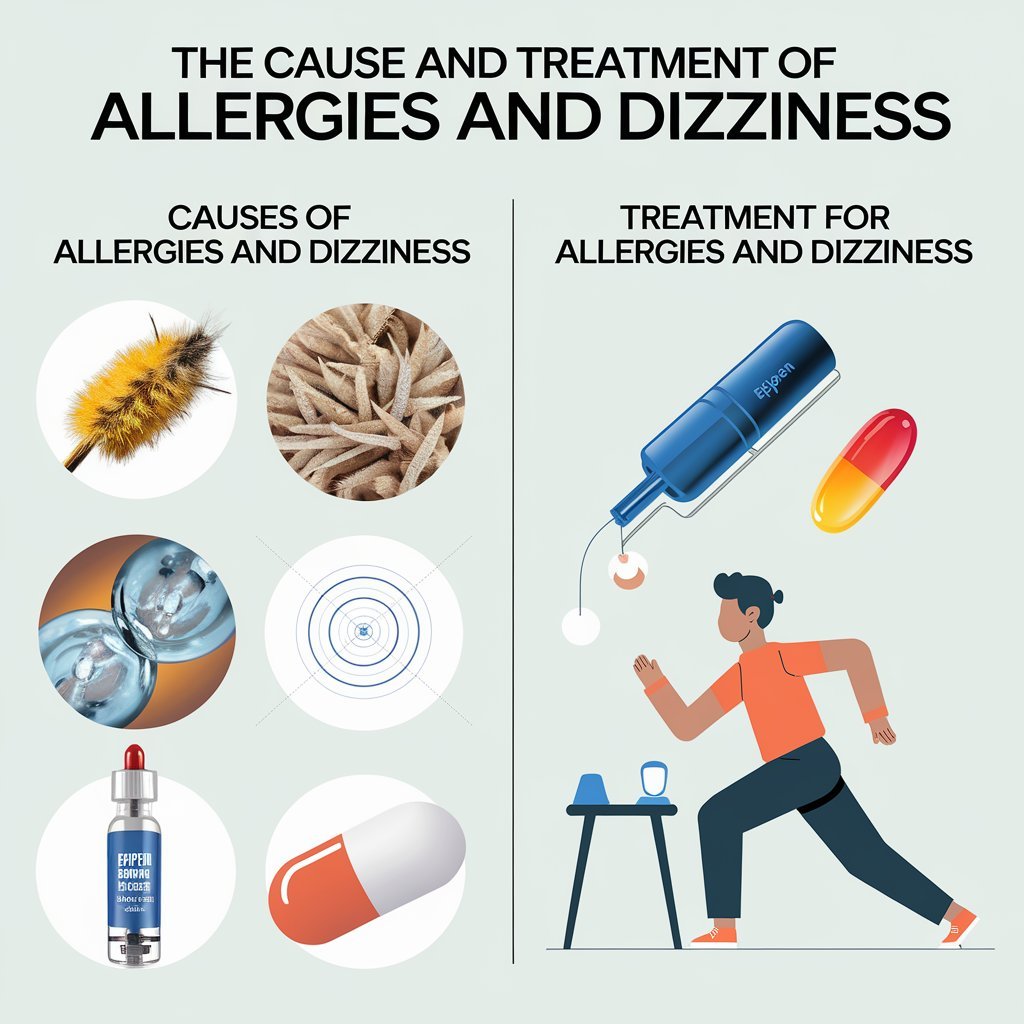Hives is a common inflammatory skin condition characterized by the formation of bumps on the skin (called wheals) and sometimes accompanied by areas of swelling (angioedema). Hives is clinically known as urticaria. The individual bumps that occur with hives grow within minutes to hours and resolve within 24 hours without leaving any permanent marks. Most cases are acute and resolve on their own within six weeks, but others persist longer and are known as chronic spontaneous urticaria.

Besides the characteristic bumps, itchiness (pruritis) and skin sensitivity are the main symptoms of hives. Any part of the body can be affected, with symptoms typically worsening at night and disrupting sleep. The angioedema that may accompany hives arises as swelling in the face, lips, limbs, or genitals
Pruritis and skin sensitivity are the main symptoms of hives, which are characterized by swellings, along with them. It can affect virtually every part of the body. Symptoms worsen at night and cause disturbed sleep. The angioedema that may occur with hives is an edema in the face, lips, limbs, or genitals.
It is very important to understand how hives manifest on the body and know when it is a sign of something serious. This article provides a quick overview of the symptoms of this condition as well as when it’s time to seek medical help.
Wheals
The hallmark physical finding of urticaria is the appearance of typical wheals on the skin. In the majority of urticaria, the problem is acute and spontaneously resolves within a week. Nevertheless, a subgroup of patients suffer from chronic urticaria, with symptoms recurred for more than six weeks.

- Onset: Wheals appear relatively quickly, in minutes to hours. Individual wheals may merge with others. Bruising or scabbing may occur with stratching but do not mark. They typically resolve within 24 hours.
- Size and shape: Typical wheals are round, oval, or irregularly shaped, varying in size from less than one to several centimeters (cm).
- Color: The wheals have a distinct reddish or darker color. When pressed, the raised bump may become pale for a time, in a process referred to as “blanching”.
- Location: Although wheals may occur in almost any area of the skin, they can be more severe or more striking in areas that have increased friction due to pressure from clothing, like at a waistband. Areas where skin rubs on skin are also more likely to flare up
.
- Itchiness: The wheals are not painful to the touch, but they are very itchy. This itchiness is worse at night.
Swelling
In up to 40% of cases, the wheals are accompanied by broader areas of swelling and inflammation, or angioedema. This occurs most commonly over the lips, face, the area around the eyes, the limbs, and the genitals. It causes an individual to experience sensitivity, slight pain, tingling, or numbness in the affected parts. Angioedema can take anywhere from a few minutes to hours to occur, and in most cases, the condition disappears within one to three days
Systemic Symptoms
In rarer cases, chronic spontaneous urticaria, that is, a chronic form of hives, in which the symptoms last more than six weeks, have some additional systemic symptoms. These include
- Headache
- Fatigue
- Pain or swelling of the joints
- Wheezing
- Flushed skin
- Gastrointestinal symptoms, such as nausea, vomiting, and abdominal ache
- Heart palpitations (irregular heartbeat)
Importantly, some of these symptoms may also suggest a more serious underlying condition. Signs that warrant further evaluation and testing include fever, painful wheals, bumps lasting longer than 48 hours, or changes in skin color or bruising after the wheals go away.

Quality of Life Effects
Though hives rarely occurs as a marker of a potentially life-threatening or fatal condition, it does frequently affect the quality of life and daily activities. Because the related itching usually worsens at night, you can often not sleep well. Continual discomfort may also make working or being at school problematic.
Most cases of hives are acute and will clear up on their own without requiring a visit to a healthcare provider. However, certain signs make a visit to your healthcare provider worthwhile. These include
- Hives lasting longer than a few days
- Wheals and/or angioedema is generalized
- Symptoms occur from an identifiable trigger or medication




